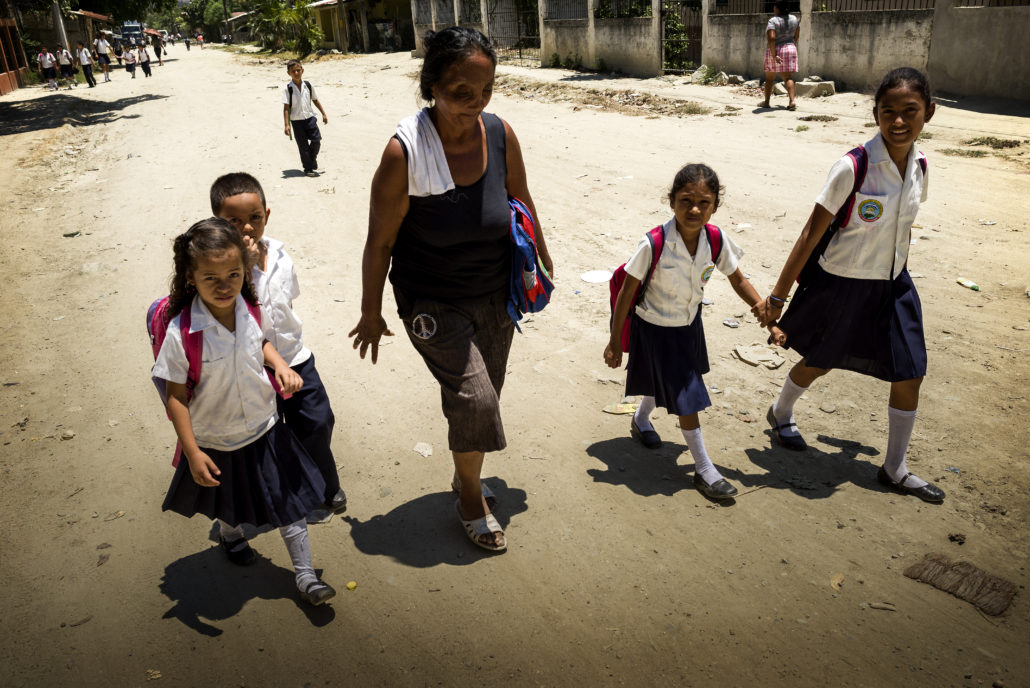The Current State of Hunger in Honduras

Located in the Northern Triangle, Honduras is one of the poorest countries in Latin America. In 2023, 64.1% of the country’s population was reported to be multi-dimensionally poor – a staggering rate higher than that reported during the pandemic. As such, millions of Hondurans are currently suffering from food insecurity and are in vital need of humanitarian aid. Fortunately, organizations such as the World Food Programme have developed several initiatives designed to successfully mitigate hunger in lasting, impactful ways.
Food Insecurity
High poverty rates directly contribute to the persistence of hunger in Honduras. An estimated 1.8 million Hondurans experienced acute food insecurity between December 2023 and February 2024. This rate is expected to worsen in the coming months in line with the seasonal hunger period, capturing a projected 1.9 million people by the end of 2024.
Malnutrition, particularly among children, is an indisputable consequence of the prevalence of food insecurity. According to the 2024 Global Hunger Index (GHI), approximately 20.4% of the population in Honduras were reported to be malnourished. Around 18.7% of children under 5 show signs of stunted growth, which is higher than the average for the Latin American and Caribbean region.
Child malnutrition disproportionately affects young and adolescent girls. With a birth rate of 101 births for every 1,000 girls between the ages of 15 and 19, Honduras has one of the highest rates of adolescent pregnancy in Central America. Malnutrition in childhood and pregnancy has numerous health-related repercussions for infants, such as low birth weight. Despite these risks, Honduras has made no progress towards alleviating this issue – today, over 10.9% of the country’s infants are underweight at birth.
Climate Change
Climate change is one of the main drivers of food insecurity in Honduras. The southern and western regions of the country – commonly referred to as the Dry Corridor – are especially vulnerable to climate-related hazards such as tropical storms, hurricanes, droughts and landslides. These predominantly rural areas are at high risk of environmental degradation yet are home to a large population of smallholder farmers who are responsible for sustaining the food supply in their respective areas. Located in northwest Honduras, the Indigenous Tolupan community is especially struggling to produce adequate harvests due to their region’s susceptibility to droughts. In 2023, crop failures for staple foods created significant disruptions to agricultural output. With 93% of the Tolupan people barely able to cover the costs of the basic food basket, many have been forced to migrate to other countries in an effort to seek affordable and accessible sustenance.
Historically, variations in rainfall and extreme weather events have severely impacted crop yields in Honduras and have resulted in damage to crucial infrastructure. However, without impactful strategies to strengthen the country’s resilience to climate change, the scale of destruction to the agricultural sector is expected to increase over time. According to the International Trade Administration, Honduras’s annual mean temperature is projected to increase by a maximum of 2.5 degrees Celsius by 2050. Agriculture-related losses that are predicted to accompany this increase include crop disease, a reduction in arable land and overall decreased crop quality.
Mitigating Hunger: World Food Programme (WFP)
Today, one of the most active humanitarian organizations focusing on mitigating hunger in Honduras is the World Food Programme. In 2023, WFP provided direct food-related assistance to 1.3 million Hondurans, 53% of whom were women. Working with the state, the organization has introduced several initiatives designed to eradicate the root causes of food insecurity and malnutrition, including the approval of parametric microinsurance for subsistence and smallholder farmers and cash-based transfers (CBT) to Indigenous and Afro-descendant groups. In an effort to improve agricultural production for rural communities, WFP has also connected smallholder farmer organizations to procurement opportunities in the public and private sectors, strengthening their connections with local markets.
Looking ahead, WFP intends to maximize its relationship with the Government of Honduras in developing more diverse and resilient food systems. The organization’s Country Strategic Plan of 2023 emphasizes the need to engage national and local partners in building a support system for all Hondurans to be able to access vital care and resources. In recognition of the country’s vulnerability to climate change, WFP will continue to provide farmers in the Dry Corridor with conditional transfers and technical assistance to increase and diversify their produce, promoting long-term resilience and adaptation.
Moving Forward
Honduras currently faces numerous challenges to human development. Factors such as climate variability perpetually create risks to the country’s agricultural productivity, resulting in the marginalization of groups such as Indigenous peoples. However, organizations such as the World Food Programme are striving to improve these conditions by providing monetary and resource-based assistance to those in need. Moving forward, it is essential that WFP and the government of Honduras continue to make food security a priority, contributing to more resilient and prosperous communities in the years to come.
– Zoe Chao, Moon Jung Kim
Photo: Flickr
Updated: October 22, 2024
